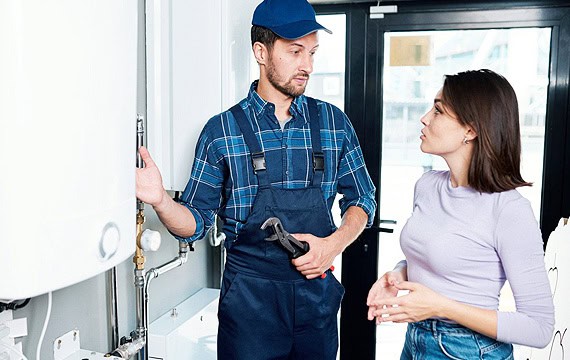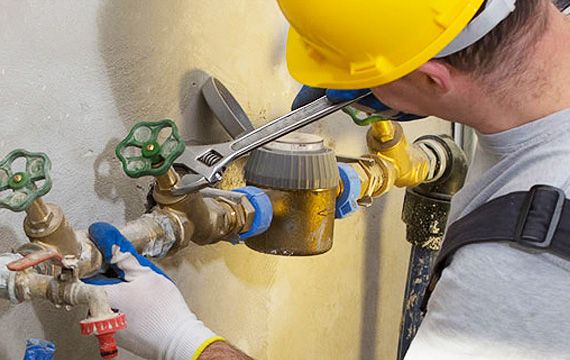Exploring the Three Essential Types of Plumbing Systems: A Comprehensive Guide
Plumbing systems are the lifeblood of modern living, ensuring that our homes and businesses have access to clean water while efficiently removing waste. As we dive into Exploring the Three Essential Types of Plumbing Systems: A Comprehensive Guide, we'll uncover the intricacies and specifics of these systems, empowering you to make informed decisions for your property. Whether you're a homeowner in Helotes or a contractor looking to refine your knowledge, this guide is tailored just for you.
Understanding Plumbing Systems
Before we delve into the specifics, it’s essential to understand what we mean by plumbing systems. Essentially, a plumbing system refers to the integrated network of pipes, fixtures, tanks, and valves that facilitate water supply and waste disposal in residential and commercial buildings. The primary goal is to provide water for drinking, cooking, bathing, heating, and sanitation.
Why Is Plumbing Important?
Good question! Why should we care about plumbing? Well, plumbing ensures:
The Role of Plumbers
Plumbers are skilled tradespeople who install and repair piping systems. They play a crucial role in maintaining health standards within our communities by ensuring that plumbing systems operate effectively.
Types of Plumbing Systems
Now that we've set the stage let's explore the three essential types of plumbing systems in detail.
1. Potable Water Supply Systems
Potable water supply systems are designed specifically for delivering clean drinking water throughout your home or business.
Components of Potable Water Supply Systems
- Pipes: Typically made from copper, PVC, or PEX materials.
- Valves: Control water flow; they include shut-off valves and pressure-reducing valves.
- Fixtures: Sinks, faucets, bathtubs—these are where you interact with your water supply.
How Do These Systems Work?
Water is sourced from municipal supplies or private wells. From there, it travels through pipes under pressure into various fixtures throughout the building. This system must meet strict safety standards set by health authorities to ensure safe consumption.
Local Considerations in Helotes
In Helotes plumbing specifically involves dealing with particular regulations regarding potable water supply due to local environmental factors. Always consult with certified plumbers familiar with local codes when designing or modifying these systems.
2. Drainage Systems
Drainage systems carry wastewater away from your premises safely and efficiently.

Components of Drainage Systems
- Drains: Collect wastewater from sinks, toilets, etc.
- Pipes: Usually made from cast iron or PVC; these transport waste away.
- Traps: Prevent sewer gases from entering your home by holding a small amount of water at all times.
How Do They Function?
Wastewater flows through gravity-driven pipes into sewer lines or septic tanks. It's vital for these pipes to be properly sloped to ensure effective drainage without clogs.
Local Challenges in Helotes
With Helotes experiencing unique weather patterns—including heavy rainfall—drainage systems must be designed thoughtfully to prevent flooding or backups during storms.
3. Venting Systems
Venting isn’t often discussed but plays a critical role in maintaining air pressure within plumbing systems.
Components of Venting Systems
- Vent Pipes: Allow air into the drainage system; they typically extend through the roof.
- Air Admittance Valves (AAVs): Used in cases where traditional venting isn’t practical; they open to allow air but close to prevent odors from escaping.
How Do Venting Systems Work?
Proper venting maintains equal pressure within drain lines so that wastewater flows smoothly without causing siphoning effects which could lead to clogs and slow drainage.
Local Insights on Venting in Helotes
If you’re planning renovations or new constructions in Helotes plumbing codes will dictate specific vent requirements based on building height and design—consult local experts!
Choosing the Right Plumbing System for Your Needs
When deciding on a plumbing system for your home or business, consider various factors:
1. Building Type
Is it residential or commercial? Different buildings may require different setups based on usage patterns.

2. Local Regulations
Always check local codes as they can affect material choices and configurations.
3. Budget
Investing upfront can save you money long-term by reducing maintenance costs—don’t skimp on quality!
4. Future Expansion
Consider whether you'll need more fixtures down the road; plan accordingly!
FAQs About Plumbing Systems
What is a plumbing system's primary purpose?
The primary purpose is to provide clean drinking water while safely disposing of wastewater from residences and businesses.
How often should I inspect my plumbing?
Ideally every year! Regular checks help catch issues early before they become costly repairs.
Can I perform my own plumbing repairs?
While minor fixes might be doable with some DIY knowledge, it's often best left to professionals—especially for major repairs!
How do I find a good plumber in Helotes?
Ask friends for recommendations! Online reviews can also provide insights about local plumbers' reputation and reliability.
What are common signs my plumbing needs attention?
Look out for slow drains, unusual noises coming from pipes, damp spots on walls/floors—these indicate potential problems!
ol2/##
Conclusion
In conclusion, understanding the three essential types of plumbing systems is crucial not only for homeowners but also for anyone involved in construction or maintenance work within their properties. By exploring concepts like potable water supply systems, drainage designs tailored for areas like Helotes—and not forgetting venting—we arm ourselves with knowledge that helps ensure our health and comfort while contributing positively toward property value retention over time!
With this comprehensive guide titled "Exploring the Three Essential Types of Plumbing Systems: A Comprehensive Guide," you're now better equipped than ever when it comes time tackle any challenges related either directly through hands-on maintenance efforts—or indirectly via informed decision-making processes surrounding Click for info future renovations/expansions!